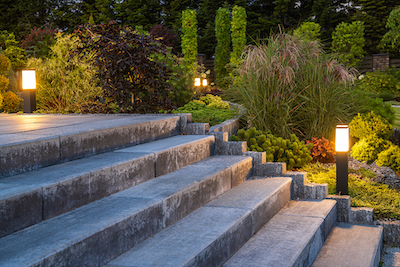Solar Outdoor Lights vs Low Voltage Outdoor Lights: A Comprehensive Comparison
Outdoor lighting is a critical aspect of home improvement, landscaping, and security. There are numerous lighting options available in the market, but the most popular choices are solar outdoor lights and low voltage outdoor lights. Both types of lighting systems offer unique advantages and disadvantages, making it essential for homeowners to understand their differences. This article provides a comprehensive comparison between solar outdoor lights and low voltage outdoor lights, discussing their features, benefits, drawbacks, and applications.
Overview of Solar Outdoor Lights
Solar outdoor lights are powered by sunlight, making them an eco-friendly and energy-efficient choice for illuminating outdoor spaces. These lights consist of solar panels, rechargeable batteries, LED bulbs, and a light sensor that turns the lights on and off according to the surrounding light levels. During the day, solar panels absorb sunlight and convert it into electrical energy, which is stored in the batteries. At night, the stored energy powers the LED bulbs, providing illumination without the need for external power sources.
Overview of Low Voltage Outdoor Lights
Low voltage outdoor lights, on the other hand, operate using an external power source, typically a transformer that converts standard 120-volt household electricity to a lower voltage, usually 12 volts. This type of lighting system involves installing wires and fixtures, as well as a transformer, to supply power to the lights. Low voltage outdoor lights are often used for landscape lighting, accentuating architectural features, and providing security.
Efficiency and Environmental Impact
One of the primary differences between solar outdoor lights and low voltage outdoor lights is their impact on energy consumption and the environment. Solar outdoor lights rely solely on renewable energy, making them a sustainable and environmentally friendly option. They do not emit greenhouse gases or contribute to pollution, making them an excellent choice for eco-conscious homeowners.
Low voltage outdoor lights, while more energy-efficient than traditional high-voltage lighting systems, still consume electricity from the grid. This means they can contribute to greenhouse gas emissions and pollution, depending on the energy source used to generate the electricity. However, their low voltage design ensures that energy consumption is minimized.
Installation and Maintenance
Solar outdoor lights are generally easier to install than low voltage outdoor lights. Most solar lights come as standalone units that can be easily placed in the ground or mounted on walls or posts without the need for extensive wiring or professional assistance. This makes solar outdoor lights an attractive option for DIY enthusiasts and those looking to save on installation costs.
Low voltage outdoor lights, conversely, require more planning and installation expertise. Homeowners need to determine the appropriate transformer size, install wiring, and position fixtures correctly. This often necessitates hiring a professional, which can increase the overall cost of the lighting system. However, the flexibility of low voltage systems allows for more customization in terms of lighting design and layout.
Maintenance-wise, solar outdoor lights require minimal attention. Periodically cleaning the solar panels to ensure maximum sunlight absorption and replacing the rechargeable batteries every few years are the primary maintenance tasks. In contrast, low voltage outdoor lights may need more frequent attention, including replacing burnt-out bulbs and checking for damaged wires.
Light Quality and Control
Solar outdoor lights typically produce a softer, more diffused light compared to low voltage outdoor lights. While this may be suitable for general illumination or accent lighting, it may not be ideal for situations that require focused or bright lighting. Low voltage outdoor lights offer a wider range of bulb types, wattages, and beam angles, providing homeowners with more control over their outdoor lighting design.
Moreover, low voltage outdoor lights can be connected to timers, dimmers, and motion sensors, allowing for more customization in terms of lighting schedules and brightness levels. Solar outdoor lights usually have limited control options, with most models only featuring an on/off switch and a built-in light sensor.
Durability and Lifespan
Both solar and low voltage outdoor lights have varying levels of durability and lifespan, depending on the quality of materials and components used. High-quality solar outdoor lights can last for several years with proper maintenance. However, some cheaper models may have a shorter lifespan due to inferior components, such as low-capacity batteries or flimsy construction.
Low voltage outdoor lights tend to have a longer lifespan compared to solar lights, particularly when it comes to the bulbs. LED bulbs in low voltage systems can last up to 50,000 hours, whereas solar LED bulbs usually have a lifespan of around 30,000 hours. Additionally, low voltage lighting systems can withstand harsher weather conditions due to their sturdier construction and the absence of delicate components like solar panels and batteries.
Cost Considerations
The initial cost of solar outdoor lights can be lower than that of low voltage outdoor lights, especially when considering the expenses associated with hiring a professional for installation. Solar lights also have the added advantage of being virtually free to operate, as they do not consume electricity from the grid. However, some homeowners may find that the higher upfront cost of low voltage outdoor lights is offset by their longer lifespan, better light quality, and increased control options.
On the other hand, low voltage outdoor lights come with higher operating costs, as they consume electricity. However, this cost can be mitigated by using energy-efficient LED bulbs and smart control systems that optimize energy consumption.
Conclusion
Both solar outdoor lights and low voltage outdoor lights have their pros and cons, with each type of lighting system catering to different needs and preferences. Solar outdoor lights are ideal for those looking for an environmentally friendly, easy-to-install, and low-cost option for general illumination or accent lighting. However, their light quality and control options may be limiting for some homeowners.
Low voltage outdoor lights, while more complex and expensive to install, offer better light quality, more control options, and longer lifespans. These lights are suitable for those who require focused, bright lighting or wish to create a customized outdoor lighting design.
Ultimately, the choice between solar outdoor lights and low voltage outdoor lights depends on individual requirements, budget, and environmental considerations. By understanding the differences between these two lighting systems, homeowners can make informed decisions and select the best option for their outdoor lighting needs.










